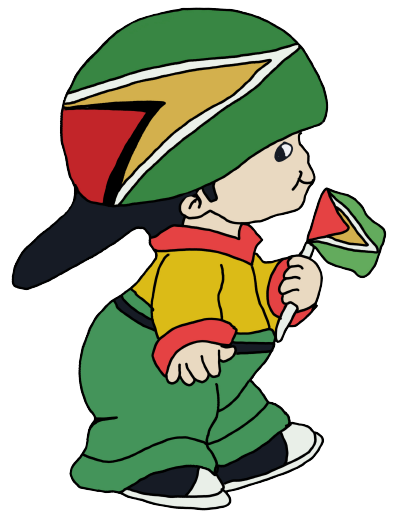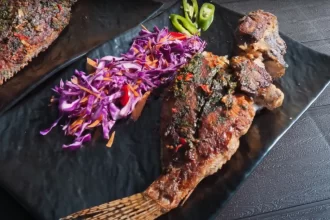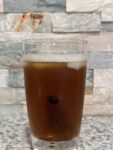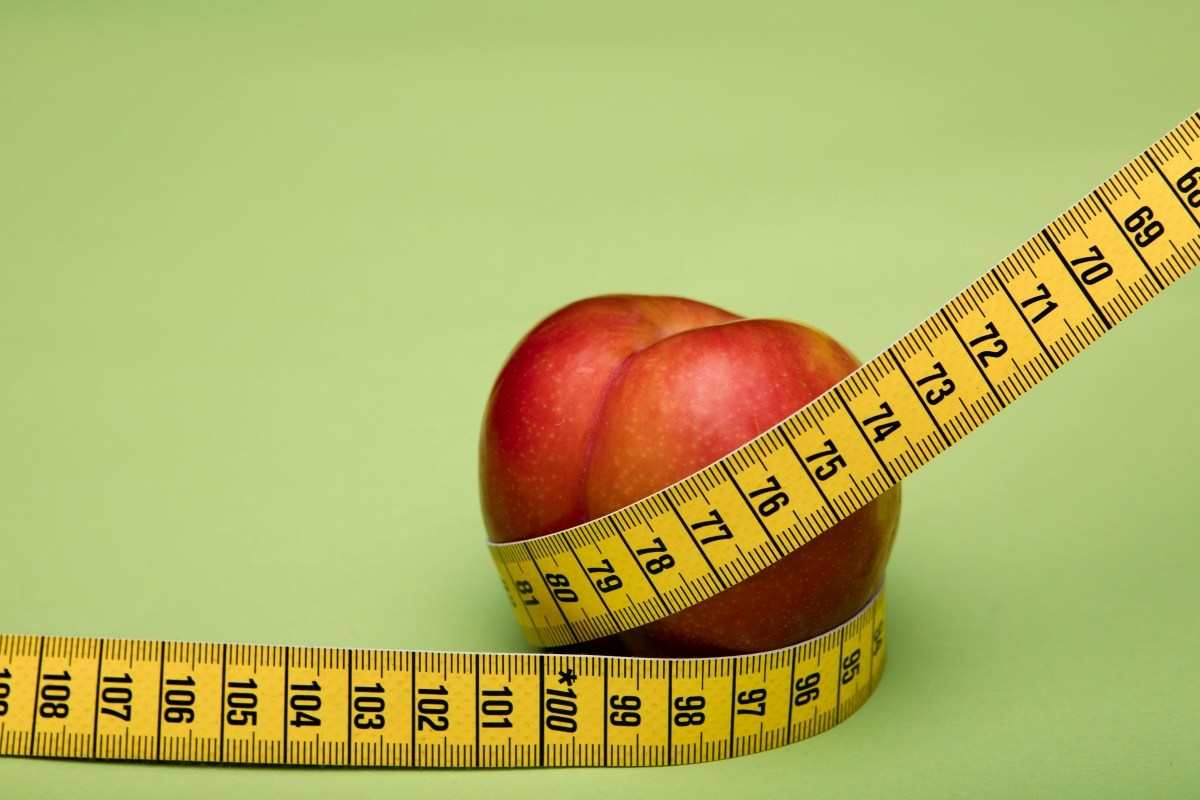Welcome to your ultimate guide to Guyanese products! Whether you’re a seasoned home cook or just getting into Guyanese cuisine, this guide will introduce you to all the essentials—from tropical fruits and fiery peppers to sweet treats and pantry staples. We’ll keep updating this post with more items, and adding recipes so keep coming back for more!
If you need information about something mek sure yuh check the GBBOK (Guyanese Big Book of Knowledge).
Now let’s get to it.
- Advertisement -
Tip
Use Ctrl + F to quickly search for an item.
Fruits and Vegetables
- Breadfruit – Versatile fruit for roasting, frying, or making chips.
- Plantain – Firm and less sweet than bananas, perfect for frying.
- Wiri Wiri Pepper – Small, fiery pepper used in many Guyanese dishes.
- Cassava – Root vegetable for cassareep, bread, and pone.
- Mango – Enjoy fresh, in chutneys, or in curries.
- Coconut – Used for its milk, oil, and flesh in various recipes.
- Golden Apple (June Plum) – Tart fruit, eaten fresh or in stews.
- Sorrel – Hibiscus flower used to make a festive drink.
- Breadnut – Related to breadfruit, boiled or roasted.
- Papaya (Pawpaw) – Enjoyed fresh, in smoothies, or in salads.
- Pepperpot Leaves – Essential for traditional Pepperpot stew.
- Starfruit (Five Finger) – Sweet and tangy fruit used in juices.
- Sour Sop – Custard-like fruit used in juices and desserts.
- Bora (Long Bean) – Used in stir-fries and stews.
- Eddoes – A type of root vegetable, similar to taro.
- Ochro (Okra) – Slimy texture perfect for thickening soups and stews.
- Sapodilla – Sweet fruit with a brown, grainy flesh.
- Guava – Eaten fresh or made into jam or juice.
- Chayote (Chocho) – Mild-flavored squash used in stews.
- Tamarind – Used for its tangy flavor in sauces and chutneys.
- Pineapple – Used in desserts, juices, or eaten fresh.
- Sugar Apple – Sweet, custard-like fruit.
- Passion Fruit – Used in drinks and desserts.
- Ackee – Used in savory dishes, especially with saltfish.
- Avocado (Pear) – Creamy fruit enjoyed fresh or in sandwiches.
- Calaloo – Leafy green similar to spinach, used in soups and stews.
- Demerara Sugar – A type of raw cane sugar that adds a rich flavor to desserts.
- West Indian Pumpkin – Used in soups, curries, and as a roasted vegetable.
- Pawpaw Leaves – Often used in traditional remedies and for cooking.
- Jelly Coconut – Young coconut with a soft, jelly-like flesh.
- Pommerac (Malay Apple) – Crisp fruit with a slightly sweet flavor, often eaten fresh.
- Breadfruit Leaves – Used in traditional remedies and cooking.
- Cane Juice – Freshly extracted juice from sugar cane.
- Jimbilin (Carambola) – A tart fruit often used in preserves or fresh.
- Mulberry – Used in desserts, preserves, and eaten fresh.
- Seville Oranges – Bitter oranges used for making marmalade.
- Custard Apple – Sweet, soft fruit similar to sugar apple.
- Pepper Elder – A leafy green used in herbal remedies and cooking.
- Bilimbi – Sour fruit used in pickles, chutneys, and curries.
- Miracle Fruit – Alters taste perception, making sour foods taste sweet.
- Fat Pork – Fruit with a creamy texture, eaten fresh.
- Tannia – Root vegetable similar to taro, used in soups and stews.
- Ginger – Used fresh or dried in a variety of dishes.
- Bayleaf – Used as a spice for flavoring in soups and stews.
- Pigeon Peas – Legumes used in soups, stews, and rice dishes.
- Snake Gourd – A long, twisted gourd used in curries.
- Indian Gooseberry (Amla) – Used in pickles, chutneys, and traditional remedies.
- Baigan (Eggplant) – Used in curries and roasts, such as in Baigan Choka.
- Custard Nut – Used in sweets and savory dishes.
- Pepperpot Wood – Used in traditional Pepperpot preparation.
- Tumeric – A bright yellow spice used for flavor and color.
- Watercress – A leafy green used in salads and soups.
- Jalapeno Pepper – Used to add heat to dishes.
- Maranta – A starchy root used in traditional recipes.
Sweets and Snacks
- Sal Sev – A crunchy chickpea flour snack, often spiced.
- Pine Tart – Pastry filled with sweet pineapple jam.
- Black Pudding – A spicy blood sausage made with rice and fresh herbs.
- Cassava Pone – Dense cake made from grated cassava, coconut, and spices.
- Sugar Cake – A coconut candy made with freshly grated coconut and sugar.
- Gulgula – Sweet, fried dough balls flavored with spices.
- Mithai – Fried dough snacks coated in sugar syrup.
- Parsad – A sweet, dense dessert made from flour, ghee, and sugar.
- Tamarind Balls – Sweet and tangy treat made from tamarind pulp and sugar.
- Dhal Puri – Flatbread stuffed with spiced split peas.
- Pepperpot Bread – Dense, sweet bread enjoyed with Pepperpot.
- Kurma – Crunchy, fried dough strips coated in sugar syrup.
- Fudge – Sweet treat made with condensed milk and sugar.
- Ginger Beer – Non-alcoholic, fermented drink made from ginger, sugar, and spices.
- Coconut Biscuits – Cookies made from shredded coconut and sugar.
- Cassava Chips – Thinly sliced cassava fried to crispy perfection.
- Jalebi – Sweet spiral-shaped fried dough soaked in sugar syrup.
- Peera – A dense, sweet candy made with milk and sugar.
- Gizzada – A pastry shell filled with a sweet coconut mixture.
- Polourie – Fried dough balls made from chickpea flour, often served with chutney.
- Channa – Spiced, fried chickpeas often enjoyed as a snack.
- Pholourie – Deep-fried balls of spicy, seasoned split pea batter.
- Sweet Rice (Kheer) – A creamy rice pudding flavored with cardamom and nuts.
- Plantain Chips – Thin slices of fried plantain, seasoned with salt or spices.
- Aloo Pie – Pastry filled with spiced mashed potatoes.
- Roti – Flatbread served with curries and stews.
- Halwa – A sweet made from semolina, ghee, and sugar.
- Guyanese Fruit Cake – Dense cake with soaked dried fruits and spices.
- Egg Ball – Hard-boiled egg wrapped in mashed cassava and fried.
- Conkie – Sweet, steamed dessert made with cornmeal, coconut, and spices wrapped in banana leaves.
- Garlic Pork – Spicy, marinated pork often served during the holiday season.
More Read
Pantry Staples and Condiments
- Cassareep – Thick syrup from cassava juice, essential for Pepperpot.
- Green Seasoning – Blend of herbs and spices for marinating meats and fish.
- Ghee – Clarified butter used in many Guyanese-Indian dishes.
- Hot Pepper Sauce – Fiery condiment made with Wiri Wiri peppers.
- Brown Sugar – Adds unique flavor and depth to sweet and savory dishes.
- Rice Flour – Used in various traditional recipes for sweets and snacks.
- Coconut Oil – Versatile oil used in cooking and flavoring dishes.
- Curry Powder – Spice blend for the base of many Guyanese curries.
- Tamarind Paste – Adds tangy flavor to dishes and chutneys.
- Chow Mein Noodles – Popular in making Guyanese-style chow mein.
- Split Peas – Essential for making dhal and various fritters.
- Brown Rice – Common base for many Guyanese dishes, from fried rice to pilaf.
- Evaporated Milk – Used in baking and drinks like Guyanese coffee.
- All-Purpose Seasoning – A mix of various spices used in many dishes.
- Garlic Powder – A staple for flavoring dishes
Equipment and Tools
- Belna (Rolling Pin) – Known as “belna” in Guyana, this tool is essential for rolling out dough to make roti, dhal puri, and other flatbreads. A heavy wooden belna works best for evenly flattened dough. Check out our recommended rolling pins.
- Tawa (Flat Griddle) – Called a “tawa” in Guyana, this flat, round griddle is used for cooking roti, paratha, and other types of flatbread. A cast iron tawa is ideal for even heat distribution.
- Karahi (Wok) – Known locally as a “karahi,” this deep, curved pan is perfect for frying, deep-frying, and making curries. Its shape allows for even heat distribution and efficient cooking. Explore our favorite woks here.
- Dutch Pot (Cast Iron Pot) – Often referred to as a “Dutchie” in Guyana, this heavy-duty pot is perfect for slow-cooking dishes like Pepperpot and stews. The cast iron construction helps to retain and evenly distribute heat.
- Mortar and Pestle – Known as a “sil and lorha,” this tool is used for grinding spices, making green seasoning, and crushing garlic and ginger. This tool is indispensable for authentic flavor.
- Rice Strainer – In Guyana, this is simply called a “strainer” and is essential for rinsing and draining rice and other grains before cooking to achieve the perfect texture. A fine mesh strainer is best for this purpose.
- Coconut Grater – Known as a “coconut mill” or “grater” in Guyana, it’s used for grating fresh coconut meat, which is often required in Guyanese sweets and savory dishes. Choose a sturdy, hand-held grater for best results.
- Pressure Cooker – Called a “pressure pot” in Guyana, this speeds up the cooking process for tough meats, beans, and other ingredients that require long cooking times. A must-have for making dishes like stew chicken and goat curry.
- Large Wooden Spoon – A “wooden spoon” or “pot spoon” is essential for stirring and mixing without damaging the cookware, especially when making Pepperpot or cooking in a cast iron pot.
- Paring Knife – In Guyana, this is just known as a “small knife,” and it’s used for peeling and cutting small fruits and vegetables. This tool is essential for precision work in the kitchen.
- Chef’s Knife – A versatile “big knife” used for chopping, slicing, and dicing various ingredients. A high-quality, sharp chef’s knife is a must-have in any kitchen. Discover our top chef’s knife sets here.
- Cutting Board – A durable “cutting board” made from wood or bamboo is ideal for chopping vegetables, meats, and herbs. Learn more about the best cutting boards here.
- Chow Mein Strainer – Known simply as a “strainer” or “drainer,” it is used for removing noodles from boiling water or fried items from oil.
- Grater – Often called a “fine grater” or “hand grater,” it’s used for shredding vegetables, cheese, and coconut. It’s especially handy for preparing ingredients like cassava or coconut.
- Colander – A large “colander,” called a “drainer” in some homes, is used to drain pasta, rice, and vegetables. Choose one with small holes to prevent food from escaping.
- Baking Pan – Called a “baking tin” or “tray,” it is necessary for making Guyanese-style cakes, pastries, and baked goods like bread and pastries.
- Peeler – A “peeler” or “knife peeler,” this sturdy tool is essential for removing the skins of fruits and vegetables like potatoes, carrots, and green plantains.
- Cooling Rack – Called a “cake rack” in some homes, it allows baked goods to cool evenly and quickly, preventing sogginess and ensuring a perfect texture.
- Fish Scaler – Called a “scale remover” or “fish scaler,” this is a handy tool for removing scales from fish, a common task when preparing fresh fish dishes.
- Food Processor – Known as a “processor” or “chopper,” this versatile tool is for chopping, slicing, and grating ingredients quickly, saving prep time.
- Cast Iron Skillet – Known as a “skillet” or “frying pan,” it’s perfect for frying, sautéing, and baking, adding flavor and retaining heat well. Explore our favorite cast iron skillets here.
- Butter Dish – A “butter holder” keeps butter fresh and at the ready for cooking and baking.
- Pastry Brush – Called a “brush” or “basting brush,” it’s used for brushing butter, oil, or egg wash on pastries and bread.
- Hand Grater – A “small grater” for smaller grating tasks, such as nutmeg or zesting citrus.
This list is just the beginning! We’ll continue to add more to help you cook like a true Guyanese chef. Be sure to check back often for updates and new recommendations.










